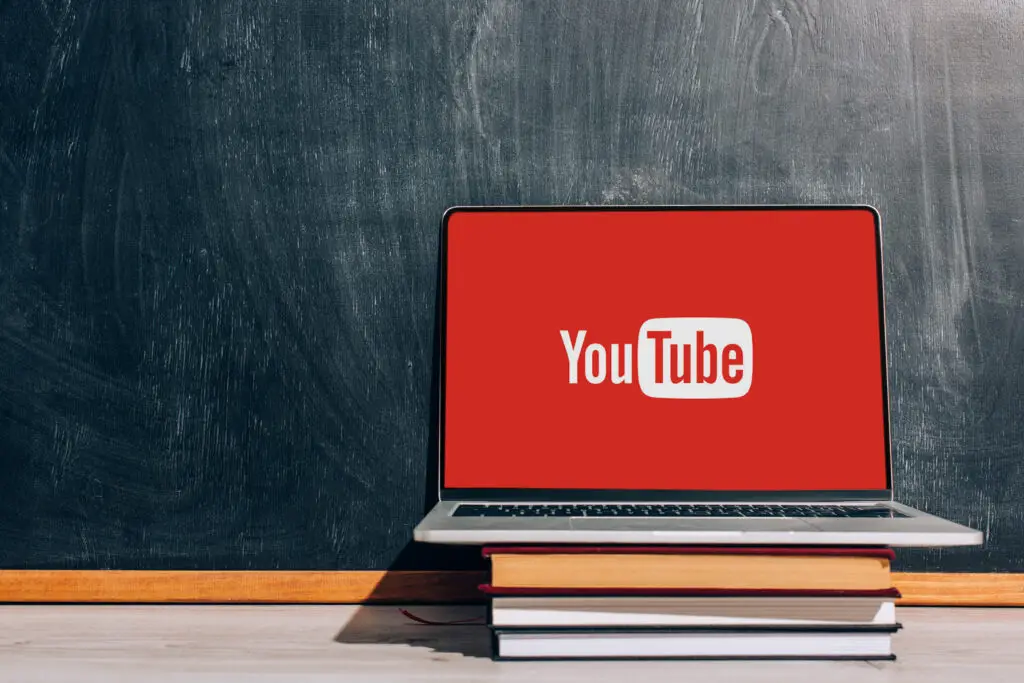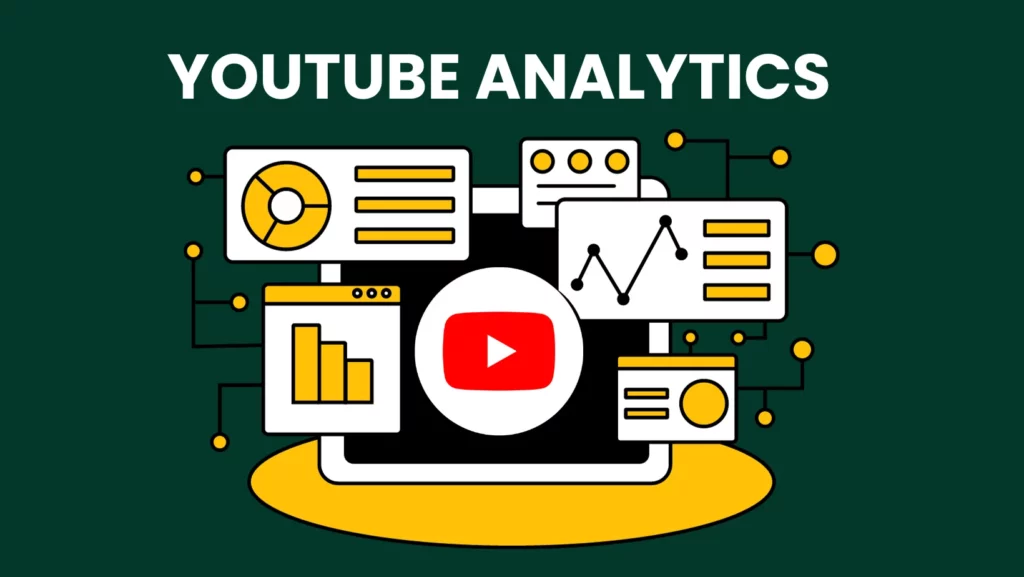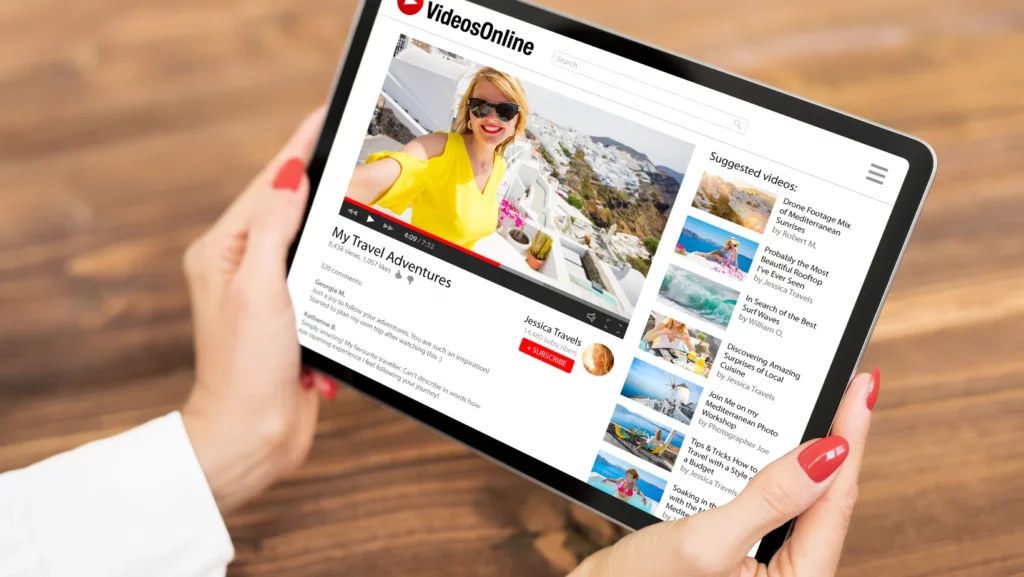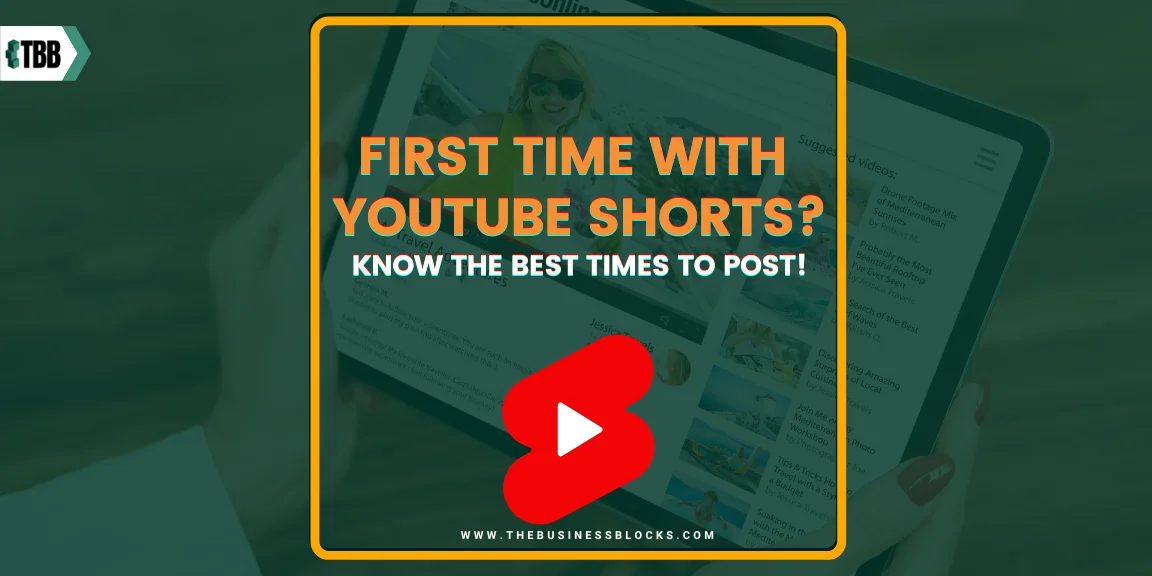Hey there, aspiring YouTube sensation! So, you’ve got killer content, but you’re scratching your head about when to hit “Publish,” right? Timing is everything, especially in the fast-paced world of YouTube Shorts. Post too early, and you’re the tree falling in an empty forest; too late, and you’re lost in the noise. But don’t sweat it! We’re diving deep into the nitty-gritty of YouTube Analytics, peak hours, and even what your competitors are up to.
Did you know?
- YouTube Shorts can be used to gain long-form subscribers. – Source
- Over 70% of YouTube watch time happens on a mobile device.
- You can monetize you’re YouTube Channel With at least 500 Subscribers of 2023 new standards.
By the end, you’ll have the inside scoop on how to maximize views and engagement. Trust us, it’s not just about throwing content into the digital void and hoping for the best.
Table of contents
- Are you looking to take advantage of YouTube Shorts?
- The Role of YouTube Analytics in Finding the Best Time
- Personalized Timing vs. General Timing
- Target Audience Considerations
- Content Relevance and Types of YouTube Shorts
- Competitive Analysis: Learning from Others
- Day of the Week: What Research Says
- Peak Hours: When Your Audience is Most Active
- Tips for Finding Your Best Time to Post
- Tools and Resources for Timing Optimization
- Frequently Asked Questions About First Time with YouTube Shorts? Know the Best Times to Post!
- Conclusion
Are you looking to take advantage of YouTube Shorts?

Just getting started with YouTube shorts? We know it can be daunting at first, but have no fear – we’ve got your back. Knowing the best times to post and optimize for discoverability is one of the biggest keys to success with this new product.
This article will help you figure out what content works best and when so that your video can get seen by a wider audience. With our advice, you’ll be able to build a solid audience base quickly before branching out into more niche topics to maximize engagement.
Keep reading and know how to maximize views on YouTube Shorts!
The Role of YouTube Analytics in Finding the Best Time
So you’ve got your YouTube Shorts ready to roll, but you’re scratching your head, wondering when’s the best time to hit that “Publish” (YouTube Videos) button, right? Well, guess what? YouTube Analytics is your new best friend. It’s like a crystal ball that tells you when your audience is most active. Let’s dive in!
Accessing YouTube Analytics

- First things first, you gotta know where to find this treasure trove of data. It’s super easy, trust me. Just log into your YouTube account and click on your profile icon in the top-right corner. From there, select YouTube Studio. You’ll see a dashboard with some basic analytics. Want to go deeper? Click on the analytics icon on the left menu. Boom! You’re in the analytics wonderland.
Interpreting Data for Timing
- Alright, you’re in. Now what? You’ll see a bunch of numbers and graphs, but don’t freak out. Focus on metrics like “watch time,” “views,” and “real-time activity.” These will give you clues about when your audience is most active. For example, if you see spikes in watch time around 6 p.m., that’s probably a good time to post your Shorts.
Real-Time Metrics
- Let’s talk about real-time metrics. These are super cool because they show you what’s happening right now. Just launched a new Short? You can see how it’s performing in the last 48 or 60 minutes. This is golden, especially if you’re testing different posting times.
Limitations of YouTube Analytics
- Okay, let’s keep it real. YouTube Analytics is awesome, but it’s not perfect. For instance, it won’t tell you why a video did well or flopped. That’s where your creativity and intuition come in. You can also use other tools like Google Analytics or third-party apps like VidIQ to get more insights.
Personalized Timing vs. General Timing
So you’ve got the basics down—your content is killer, and you’re all set with YouTube Analytics. But now comes the million-dollar question: When should you post your YouTube Shorts? Should you follow general timing guidelines or tailor it to your specific audience? Let’s break it down!
Advantages of Personalized Timing
- So, you’ve been eyeing your YouTube Analytics like a hawk, and you’ve noticed that your audience is super active around lunchtime. Posting your Shorts then could be a game-changer. Why? Because you’re giving the people what they want when they want it! Personalized timing means higher engagement, more views, and let’s not forget—more love from YouTube’s algorithm.
Risks of Personalized Timing
- Hold up! Before you go all-in on personalized timing, let’s talk about risks. What if your audience’s behavior changes? Maybe they start watching YouTube videos in the evening instead. If you’re too rigid with your timing, you might miss out on reaching new or shifting audiences.
General Timing Guidelines
- Alright, let’s zoom out a bit. What does the internet say about general timing? According to a Boosted article, the best days to post are Friday through Saturday and Wednesday. The golden hours? Around 5 PM to 9 PM. Sundays are also great, especially in the morning between 8 AM and 11 AM or in the evening after 5 PM. These times can give you a broad reach, capturing both early birds and night owls.
Balancing Both Approaches
- So, what’s the verdict? Should you go personalized or general? How about a bit of both? Use your analytics to find your audience’s sweet spots but also keep an eye on general trends. This way, you’re not putting all your eggs in one basket. You’re optimizing for your current audience while also leaving room to grow. It’s like having your cake and eating it too!
And hey, speaking of optimization, if you’re a newly exposed tech professional looking to streamline your business processes, check out The Business Blocks.
Target Audience Considerations

So you’ve got your content and timing down, but what about your audience? Knowing who’s watching can make or break your YouTube Shorts game. Let’s dig into why understanding your target audience’s behavior, preferences, and even time zones can be a game-changer.
Identifying Your Target Audience
- First up, who are you talking to? Is it college students, busy professionals, or maybe tech enthusiasts? Knowing this can help you tailor your content and posting times. You can use tools like YouTube Analytics to get demographic data. But don’t stop there! Surveys and social media polls can offer even more insights.
Time Zone Considerations
- Time zones can be tricky but they’re super important. If your audience is global, a consistent posting schedule at 3 PM EST might be midnight for someone in another country. So, consider using a tool like World Time Buddy to find a time that works for most of your audience. Or, you can even post multiple times to cater to different time zones. It’s a bit more work, but hey, it could be worth it!
Audience Engagement Metrics
- Last but not least, let’s talk about engagement. You want likes, comments, and shares, right? Keep an eye on these metrics to gauge how well your audience is connecting with your content. If you see a spike in engagement, you’re onto something. Keep it up!
Audience Behavior Analysis
- Now that you know who your audience is, let’s figure out what they like. Are they night owls or early birds? Do they prefer comedy or educational content? YouTube Analytics can help here too. Look for metrics like “Audience Retention” and “Watch Time” to see when and what people are watching. If you notice that educational Shorts get more views during weekdays, you’ve got a clue!
Content Relevance and Types of YouTube Shorts

Posting YouTube shorts and uploading YouTube videos at the right time is only half the battle. Content relevance is also key if you want to reel your audience in and keep them engaged. Let’s break down the different types of YouTube Shorts and how they can help give your content an edge.
Educational Shorts
Best Practices and Ideal Times
- Hey, you know what’s cool? Learning stuff! But guess what’s even cooler? Learning stuff when you have the time to absorb it. That’s why timing is everything when it comes to educational YouTube Shorts. According to Statusbrew, the best times to post informative and educational content are 8 AM, 11 AM, and from 3 PM to 4 PM. These slots align with when people are most likely to have some free time for learning, like during breaks at work or school. So, if you’re in the business of educating folks, these are your golden hours!
Why Timing Matters
- Timing isn’t just about when people are free; it’s also about when they’re most receptive. Imagine trying to learn quantum physics at 2 a.m. Not happening, right? That’s why you’ve got to catch your audience when they’re alert and ready to take in new information. Trust me, your view counts—and your audience’s brain cells—will thank you.
Entertainment-Focused Shorts
Optimal Times for Max Fun
- Who doesn’t love a good laugh or some quality entertainment? But here’s the kicker: Timing can make or break your entertainment-focused YouTube Shorts. The best times for this kind of content are 7 AM, 12 PM to 1 PM, and 9 PM to 10 PM. These times are perfect because they coincide with people’s free moments—like morning routines, lunch breaks, and winding down before bed. So, if you want to entertain, aim for these time slots.
The Power of Trending Topics
- Now, let’s talk trends. If something’s buzzing on social media platforms, you’ve got a golden opportunity to ride that wave. But remember, trends are time-sensitive. So, if you’re going to jump on a trending topic, make sure you do it when your audience is most active. That way, you’re not just part of the conversation; you’re leading it.
Niche-Specific Content
- Got a niche? Awesome! Whether you’re into knitting, drone racing, or cooking vegan meals, there’s an audience for you. But here’s the thing: Every niche has its own “prime time.” For example, if your content is about food, the best times to post videos are around meal times: 7 AM, 11 AM to 12 PM, and 5 PM to 6 PM. So, do some research, find out when your specific audience is most active, and hit ’em with that killer content.
Seasonal and Trending Topics
When to Post What’s Hot
- Seasonal topics are like the pumpkin spice lattes of YouTube Shorts—they’re super popular for a limited time. Whether it’s holiday recipes, summer travel tips, or back-to-school hacks, timing is crucial. You want to post this content right before the season kicks off.
The Real Deal on Real-Time Trends
- Real-time trends are a whole different ball game. These are topics that explode in popularity—think viral challenges or breaking news. For these, you need to act fast. The sooner you post, the better your chances of riding that viral wave to the top of the trending page.
Competitive Analysis: Learning from Others

Hey there, savvy YouTuber! So you’ve got your YouTube Shorts game on point, but you’re wondering how to get ahead of the competition, right? Well, you’re in the right place. Let’s dive into the world of competitive analysis and how it can supercharge your YouTube strategy.
Monitoring Competitors
- First things first, you’ve got to know who you’re up against. And no, I’m not talking about stalking their social media profiles. I mean keeping tabs on when they post their YouTube Shorts, what kind of content they’re putting out, and how well it’s doing. You can do this manually by regularly checking their YouTube channel, or you can use tools like Keyhole that offer competitor tracking services.
- Why is this important? Well, knowing what your competitors are doing can help you identify gaps in your strategy. Maybe they’re posting at times when you’re not, or maybe they’re covering topics that you haven’t even thought of yet. Either way, monitoring your competitors can give you valuable insights that can help you up your game.
Analyzing Competitor Success
- Alright, so you’ve been keeping an eye on your competitors. Now what? It’s time to dig a little deeper. Look at the metrics. How many views are they getting? What’s their engagement rate like? Are people commenting and sharing their videos?
- Once you’ve gathered this data, compare it to your metrics. This will give you a clearer picture of where you stand and what you need to work on. For instance, if your competitor’s videos are getting more views but less engagement, it might mean that while their topics are hot, their content might not be as engaging. This is your chance to swoop in with content that’s not just relevant but also super engaging.
Adapting Your Strategy
- You’ve monitored, you’ve analyzed, and now you’re armed with a ton of information. It’s time to adapt your strategy. Maybe you’ve noticed that your competitors are posting more frequently than you are, or maybe they’re using certain keywords that you haven’t thought of. Whatever the case may be, use these insights to adapt and refine your strategy.
- Remember, the goal isn’t to copy what your competitors are doing but to learn from them. Take what’s working for them, add your unique twist, and make it even better. That’s how you not only catch up to your competitors but also surpass them.
Tools for Competitive Analysis
- Now, you might be thinking, “This all sounds great, but it also sounds like a lot of work.” And you’re not wrong. Competitive analysis can be time-consuming, especially if you’re doing it manually. But guess what? There are tools out there that can make your life a whole lot easier.
- For instance, Keyhole offers a range of features that can help you conduct a complete competitive analysis in just a few simple steps. From tracking competitors to generating reports that identify trends and optimal posting times, these tools can be a game-changer for your YouTube strategy.
Day of the Week: What Research Says
Hey there, future YouTube star! You’re probably wondering, “What’s the best day to post my awesome YouTube Shorts?” Well, you’re in luck because we’ve got the lowdown on what research says about the best and worst days to hit that “Publish” button. Let’s dive in!
Weekdays vs Weekends
- So, you’re torn between posting on a weekday or a weekend, huh? Well, let’s break it down. According to research from SocialPilot, the best time to post on YouTube is between 2 to 4 p.m.a.m. (EST) on weekdays and from 9 to 11 a.m. (EST) on weekends. But here’s the kicker: it’s not one-size-fits-all. Your target audience’s behavior and time zones can make a big difference. So, while weekdays might be great for catching the 9-to-5 crowd, weekends could be your golden ticket to reaching folks who are too busy during the week.
Best Days According to Research
- Ready for some specifics? Research suggests that Sunday is a pretty solid day to post. But wait, there’s more! Other studies have shown that Thursday and Friday can also be effective days to upload your content. So, if you’re looking to maximize views and engagement, you might want to consider posting on these days. But remember, these are general guidelines. Your specific audience might have different habits, so don’t be afraid to experiment and find what works best for you.
The Worst Days to Post
- Now let’s talk about the days you might want to avoid. While the research doesn’t explicitly state “bad days,” it’s safe to say that if you’re not getting much traction on certain days, those are probably not your best bet. For example, if you notice that your videos aren’t getting many views on Mondays, it might be worth switching things up and trying a different day.
How Holidays Affect Posting
- Ah, holidays, the double-edged sword. On one hand, people have more free time to watch videos on YouTube. On the other hand, they might be too busy with holiday festivities to even glance at their phone. So, what’s a YouTuber to do? Plan! If you know a major holiday is coming up, consider adjusting your posting schedule or creating holiday-specific content that your audience will love.
Peak Hours: When Your Audience is Most Active

Hey there, savvy YouTuber! So, you’ve got your best YouTube camera, your content, and your charisma. But wait, when’s the best time to share your masterpiece with the world? That’s where the concept of “peak hours” comes into play. These are the golden hours when your audience is most active online. Let’s dive deep into how you can identify these peak hours and use them to your advantage.
Identifying Peak Hours
- First things first, how do you even find out when your audience is most active? Well, you’ve got a couple of options. One way is to use YouTube Analytics. This tool provides a feature called “When your viewers are on YouTube,” which shows you a graph of your audience’s activity throughout the day and week. The darker the bar, the more people are online. Pretty neat, huh?
- But what if you’re just starting and don’t have enough data? No worries! You can use third-party tools like SocialPilot or TubeBuddy to get insights into general audience behavior. These tools analyze data from multiple channels in your niche to give you an idea of when people are most active.
Benefits of Posting During Peak Hours
So why should you care about peak hours? Well, posting during these times can give your video a serious boost. Here’s how:
- Increased Visibility: More people online means more potential viewers. It’s as simple as that.
- Higher Engagement: When people are active, they’re more likely to engage with your content, be it likes, comments, or shares.
- Algorithmic Advantage: YouTube’s algorithm favors videos that get quick engagement. So, posting during peak hours can help your video climb up the rankings faster.
Risks of Posting During Peak Hours
But hold on, it’s not all sunshine and rainbows. Posting during peak hours has its downsides too:
- Increased Competition: Guess what? You’re not the only one eyeing those peak hours. More creators posting at the same time means your video has to fight harder for attention.
- Potential for Lower Watch Time: If viewers have a plethora of options, they might hop from one video to another, reducing the watch time on your video, which is a crucial metric for YouTube’s algorithm.
How to Experiment with Peak Hours
Alright, you get the idea of peak hours, but how do you know which hours are “peak” for you? Experimentation is key. Here are some tips:
- Start with General Peak Hours: Use the general peak hours as a starting point. These are usually weekday afternoons and weekend mornings.
- A/B Testing: Post similar videos at different times and days. Track their performance to see which times yield the best results.
- Monitor and Adjust: Keep an eye on your analytics. If you notice a change in audience behavior, be ready to adjust your posting schedule accordingly.
Tips for Finding Your Best Time to Post
Here are some tips that can help you find the best time to post your awesome YouTube Shorts:
The Importance of Experimentation
- Experimentation is a cornerstone of any effective YouTube short posting strategy. While analytics can provide you with a wealth of data, real-world testing is the only way to validate these insights. Experimentation allows you to test different posting times and measure their impact on key performance indicators like views, engagement rate, and subscriber growth.
Using A/B Testing for Timing
- A/B testing is a methodical approach to experimentation that involves changing one variable at a time to measure its impact. In the context of YouTube Shorts, this could mean posting the same video at two different times of the day or week to see which time yields better results. The Neal Schaffer article suggests using YouTube Studio to track viewership and engagement, which can be invaluable for A/B testing.
Review and Adapt Your Strategy
- Adapting your strategy based on the data you collect is essential for long-term success. Regularly review your performance metrics to identify trends or shifts in audience behavior. The Neal Schaffer article emphasizes the importance of analyzing your specific audience data and figuring out the best times that work for you.
Tools and Resources for Timing Optimization
- YouTube Studio: This free tool from Google provides a comprehensive breakdown of standard data points, including viewership and engagement metrics.
- Google Analytics: While not specific to YouTube, Google Analytics can provide additional insights into user behavior that can inform your posting strategy.
- Competitor Analysis Tools: Tools like SEMrush and Ahrefs can provide insights into when your competitors are posting, allowing you to identify potential opportunities.
Frequently Asked Questions About First Time with YouTube Shorts? Know the Best Times to Post!
Q: How Does YouTube’s algorithmic Timing Impact the Best Time to Post YouTube Shorts?
A: Algorithmic timing refers to the way YouTube algorithm decides when to show your content to viewers. While it’s crucial to post when your audience is most active, remember that YouTube’s algorithm also plays a role. It’s designed to show users content that it believes they’ll find most engaging, regardless of when it was posted. Therefore, focusing on creating high-quality, engaging content can sometimes outweigh the importance of timing.
Q: Can I Use Third-Party Tools to Automate Posting at the Best Times?
A: Yes, you can use third-party tools like Hootsuite or Buffer to schedule your YouTube Shorts. These tools often come with analytics features that can help you identify the best times to post based on past performance. However, it’s essential to keep an eye on how these scheduled posts perform over time and adjust your strategy as needed.
Q: How Do Holidays and Special Events Affect the Best Time to Post?
A: Holidays and special events can significantly impact viewer behavior. For example, posting a YouTube Short related to a holiday right before the event can boost engagement. However, posting regular content during a major holiday might not get as much traction since people are likely to be busy. Always consider the context of special days and plan your posting schedule accordingly.
Q: Is There a “Bad Time” to Post YouTube Shorts?
A: While there’s no universally “bad time” to post, it’s generally advisable to avoid times when your target audience is likely to be busy or unavailable. For example, posting in the middle of the night or during typical working hours might not yield the best results. However, these “bad times” can vary depending on your specific audience and their habits.
Q: How Often Should I Re-Evaluate My Posting Time Strategy?
A: It’s a good practice to review your posting time strategy every quarter. Audience behaviors can change due to various factors like seasonality, changes in lifestyle, or even algorithm updates. Regularly reviewing your analytics and perhaps conducting new A/B tests can help you stay ahead of these changes and optimize your posting times.
Conclusion
YouTube Shorts can be a great way to reach your target audience and promote your videos. To maximize the effectiveness of this platform, it is best to post shorts during peak times – moments when viewers are actively browsing and engaging with video-sharing content. Times vary by region, but during the day, there are usually several key time slots that see higher engagement levels than others. It’s also worth paying attention to the search results on YouTube Shorts – these are also affected by timing, so adjusting when you post your videos accordingly can be beneficial in terms of reaching potential viewers.
Finally, don’t forget to watch YouTube for what other popular YouTubers are sharing during peak times and you too can tap into a larger audience! Start exploring when the best time is for you to post on YouTube Shorts and stay ahead of the competition while getting noticed.

